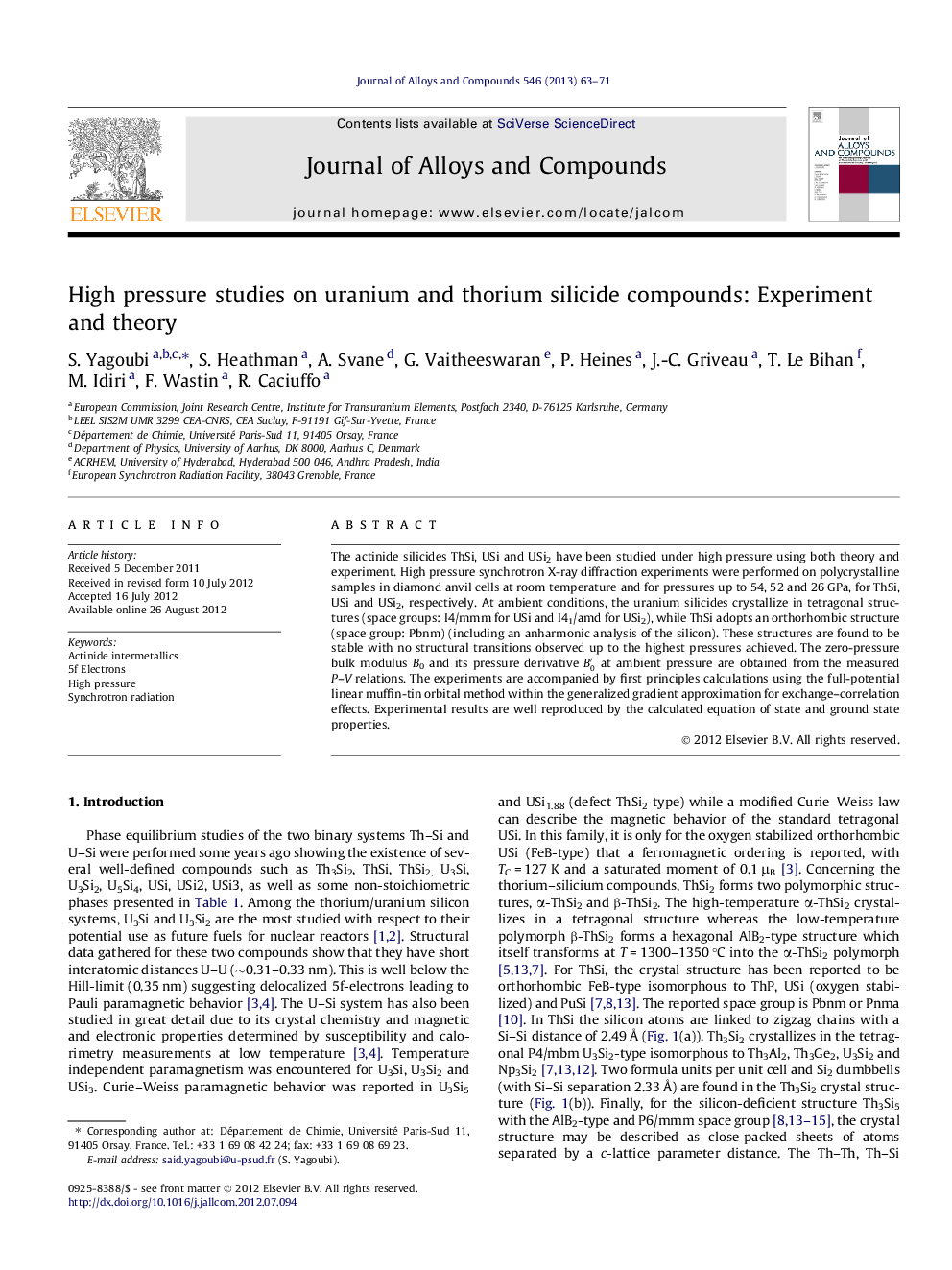| Article ID | Journal | Published Year | Pages | File Type |
|---|---|---|---|---|
| 1615234 | Journal of Alloys and Compounds | 2013 | 9 Pages |
The actinide silicides ThSi, USi and USi2 have been studied under high pressure using both theory and experiment. High pressure synchrotron X-ray diffraction experiments were performed on polycrystalline samples in diamond anvil cells at room temperature and for pressures up to 54, 52 and 26 GPa, for ThSi, USi and USi2, respectively. At ambient conditions, the uranium silicides crystallize in tetragonal structures (space groups: I4/mmm for USi and I41/amd for USi2), while ThSi adopts an orthorhombic structure (space group: Pbnm) (including an anharmonic analysis of the silicon). These structures are found to be stable with no structural transitions observed up to the highest pressures achieved. The zero-pressure bulk modulus B0 and its pressure derivative B0′ at ambient pressure are obtained from the measured P–V relations. The experiments are accompanied by first principles calculations using the full-potential linear muffin-tin orbital method within the generalized gradient approximation for exchange–correlation effects. Experimental results are well reproduced by the calculated equation of state and ground state properties.
Graphical abstractFigure optionsDownload full-size imageDownload as PowerPoint slideHighlights► High pressure studies on uranium and thorium silicide compounds. ► Bulk modulus B0 at ambient pressure are obtained from the measured P–V relations. ► Experimental results are well reproduced by the calculated equation of state. ► The electronic densities of states are calculated for ThSi, USi and USi2.
